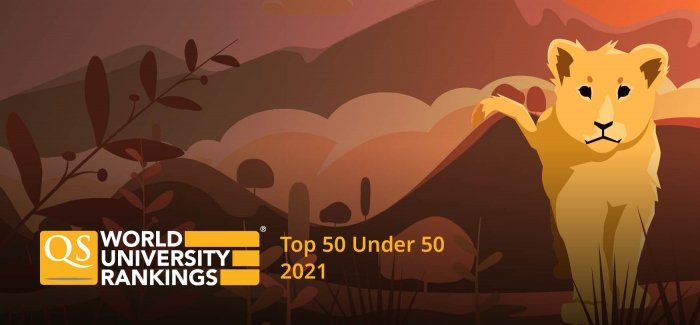Information under strict embargo until 00:01 BST on Tuesday 6th September
Investment in higher education pays in QS World University Rankings 2016-2017
Join the conversation #QSWUR
The thirteenth edition of the QS World University Rankings indicates that investment in higher education – either public or private – is a key differentiating factor between this year’s risers (South Korea, Russia, the United States, and China) and fallers (Western and Southern Europe, South Africa, and Latin America).
Highlights
- MIT the world's top university for the fifth year.
- Stanford, 2nd (previously 3=) and Harvard, 3rd (previously 2nd) follow.
- US institutions hold all top-three places for the first time since 2004-5.
- Western European institutions consistently suffer drops, particularly the United Kingdom and Germany. Cambridge drops to fourth.
- Russia and South Korea rise significantly (latter has 16 top-500 universities compared to 13 last year).
- China continues to progress, with Tsinghua (24th) rising to its highest-ever position.
- National University of Singapore (12th) remains the leading Asian institution.
- Australia and Canada increase their representation in the top 200, with nine universities apiece, one more than last year.
- Latin America struggles, but sees an institution in the top 100 for the first time. Universidad de Buenos Aires (85th) occupies the highest rank ever achieved by a university from the region.
74,651 academics and 37,781 employers contributed to the rankings through the QS global surveys, the largest of their kind. QS analyzed 10.3 million research papers and 66.3 million citations, indexed by Elsevier's Scopus database. Over 3,800 institutions were considered for inclusion and 916 ranked.
2016 |
2015 |
Top 20 |
Country |
|
1 |
1 |
MIT |
US |
|
2 |
3= |
STANFORD |
US |
|
3 |
2 |
HARVARD |
US |
|
4 |
3= |
CAMBRIDGE |
UK |
|
5 |
5 |
CALTECH |
US |
|
6 |
6 |
OXFORD |
UK |
|
7 |
7 |
UNIVERSITY COLLEGE LONDON |
UK |
|
8 |
9 |
ETH ZURICH |
CH |
|
9 |
8 |
IMPERIAL COLLEGE LONDON |
UK |
|
10 |
10 |
CHICAGO |
US |
|
11 |
11 |
PRINCETON |
US |
|
12 |
12 |
NATIONAL UNIVERSITY OF SINGAPORE |
SG |
|
13 |
13 |
NANYANG TECHNOLOGICAL UNIVERSITY |
SG |
|
14 |
14 |
EPFL |
CH |
|
15 |
15 |
YALE |
US |
|
16 |
17 |
CORNELL |
US |
|
17 |
16 |
JOHNS HOPKINS |
US |
|
18 |
18 |
UPENN |
US |
|
19 |
21 |
EDINBURGH |
UK |
|
20 |
22 |
COLUMBIA |
US |
© QS Quacquarelli Symonds 2004-2016 topuniversities.com
Ben Sowter, head of research at QS, said: “This year’s rankings imply that levels of investment are determining who progresses and who regresses. Institutions in countries that provide high levels of targeted funding, whether from endowments or from the public purse, are rising. On the other hand, some Western European nations making or proposing cuts to public research spending are losing ground to their US and Asian counterparts.”
The rankings include 916 universities from 81 countries. Thirty-three countries feature in the Top 200. The US dominate, with 48 institutions, ahead of the UK (30), Netherlands (12), Germany (11), Canada, Australia (9), Japan (8), China (7), France, Sweden and Hong Kong (5).
The full QS World University Rankings for 2016-2017 can be found here.
-Ends-
To request country-specific press releases, please contact the QS Press Office:
Simona Bizzozero
Head of Public Relations
QS Quacquarelli Symonds
simona@qs.com
pressoffice@qs.com
@qs_pressoffice
+ 44(0)7880620856
+44 (0) 2072847248
Jack N. Moran
PR Executive
QS Quacquarelli Symonds
jack@qs.com
pressoffice@qs.com
@JackNathanMoran
Notes for editors
QS World University Rankings®
The QS World University Rankings is an annual league table of the top universities in the world and is arguably the best-known and respected ranking of its kind. Compiled by the QS Intelligence Unit in close consultation with an international advisory board of leading academics, the QS World University Rankings® is widely referenced by prospective and current students, university professionals and governments worldwide. The purpose of the rankings has been to recognize universities as the multi-faceted organisations they are and to provide a global comparison of their success against their notional mission of becoming or remaining world-class. The QS World University Rankings are based on four key pillars, research, teaching, employability and internationalisation and the methodology consists of six indicators: academic reputation (40%), employer reputation (10%), faculty student ratio (20%), citations per faculty (20%), international students (5%), and international faculty (5%).
http://content.qs.com/qsiu/Faculty_Area_Normalization_-_Technical_Explanation.pdf
Key facts and figures
•74,651 academics and 37,781 employers’ responses contributed towards the results, making both surveys the largest of their kind in the world.
•Over 3,800 institutions were considered for inclusion this year and 916 ranked, 25 more than in 2015.
•10.3 million papers indexed by the the Scopus/Elsevier bibliometric database were analyzed, and 66.3 million citations counted, which amounted to 50.4 million citations once self-citations were excluded.
QS Intelligence Unit www.iu.qs.com
QS has been conducting research in a range of areas since 1990, beginning with a global survey of MBA employers. The QS World University Rankings®, the most established of the range of research projects that QS operates, have been in existence since 2004. To meet the increasing public interest for comparative data on universities and organisations, and the growing demand for institutions to develop deeper insight into their competitive environment, the QS Intelligence Unit (QSIU) was formed in 2008 as a distinct and autonomous department. Committed to the key values of rigorous integrity, unique insight, undeniable value and accessible presentation, QSIU strives to be the most trusted independent source of global intelligence on the higher education sector.
Ben Sowter
Sowter is the head of research at the QS Intelligence Unit. He holds a BSc in Computer Science from the University of Nottingham, where he was also awarded the Union Prize for outstanding contribution to the student union and served as chairman of the Nottingham University Debating Society. Ben is fully responsible for the operational management of all major QS research projects and is actively involved in all the collection, compilation and tabulation of all the data that lead to, amongst others, the QS World University Rankings research with which he has been involved since its initial inception in 2004. A frequent contributor to the press, Ben’s opinion on global education trends and his expertise is used regularly by major global publications
About Scopus
Scopus is the largest abstract and citation database of peer-reviewed literature and features tools to track, analyse and visualize scholarly research. Its comprehensive database contains 55+ million items indexed from 21,000 titles from more than 5,000 publishers worldwide, ensuring broad interdisciplinary coverage in the fields of science, technology, medicine, social sciences and arts and humanities. Scopus was designed and developed with input from researchers and librarians and features direct links to subscribed full-text articles, other library resources and interoperability with applications such as reference management software. Scopus is part of the Elsevier Research Intelligence portfolio which includes the SciVal tools, the Pure system, rich data assets and custom Analytical Services.
About Elsevier
Elsevier is a world-leading provider of information solutions that enhance the performance of science, health, and technology professionals, empowering them to make better decisions, deliver better care, and sometimes make groundbreaking discoveries that advance the boundaries of knowledge and human progress. Elsevier provides web-based, digital solutions – among them ScienceDirect, Scopus, Elsevier Research Intelligence and ClinicalKey – and publishes over 2,500 journals, including The Lancet and Cell, and more than 33,000 book titles, including a number of iconic reference works. Elsevier is part of RELX Group plc, a world-leading provider of information solutions for professional customers across industries.
Global impact of the QS World University Rankings
IREG approval
QS Quacquarelli Symonds is the first compiler of global and regional university rankings to receive the “IREG Approved” label for three of its research outputs. The Observatory on Academic Rankings and Excellence (IREG) Executive Committee, at its meeting in Warsaw on 15th May 2013, decided to grant to QS the rights to use the “IREG Approved” label in relation to the following three rankings: QS World University Rankings, QS University Rankings: Asia, and QS University Rankings: Latin America. More information on its correct usage is available here.
The Global Innovation Index (GII)
The QS World University Rankings has been used as one of the indicators for the GII since 2013. The QS ranking is the only ranking of its kind to be used for the study. The GII is co-published by Cornell University, INSEAD and the World Intellectual Property Organization (WIPO, a specialized agency of the United Nations). The annual report consists of a ranking of world economies’ innovation capabilities and results.
The Bank of Communications Sea Turtle Index
The Bank of Communications Sea Turtle Index was developed and produced by The Economist Intelligence Unit (EIU), which benchmarks the potential returns – academic, financial, and social – on an international undergraduate education in 80 cities worldwide. These were chosen first by clustering the top 300 universities from the QS World University Rankings into major cities, allowing for richer data and greater regional diversity in results. EIU analysts then used OECD statistics on the percentage of international students going to each country to decide on the number of cities to feature per country.

















